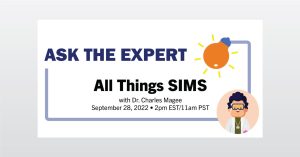
Ask The Expert – All About SIMS Webinar
In the full webinar we answer pre-submitted questions from our audience about Secondary Ion Mass Spectrometry
To enable certain features and improve your experience with us, this site stores cookies on your computer. Please click Continue to provide your authorization and permanently remove this message.
To find out more, please see our privacy policy.